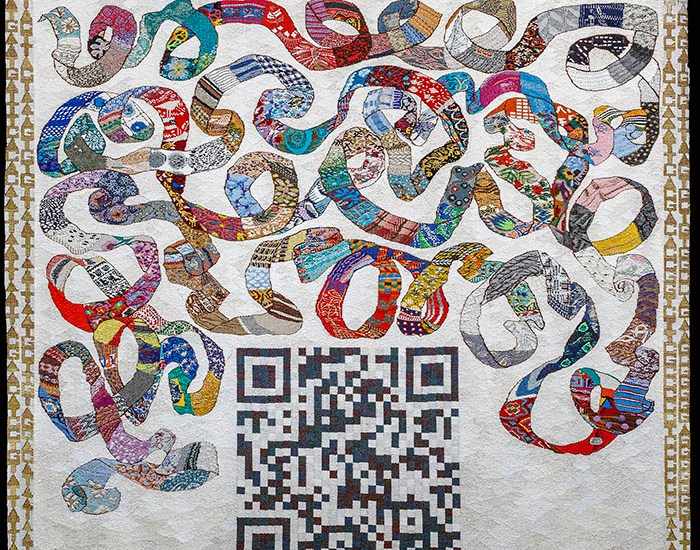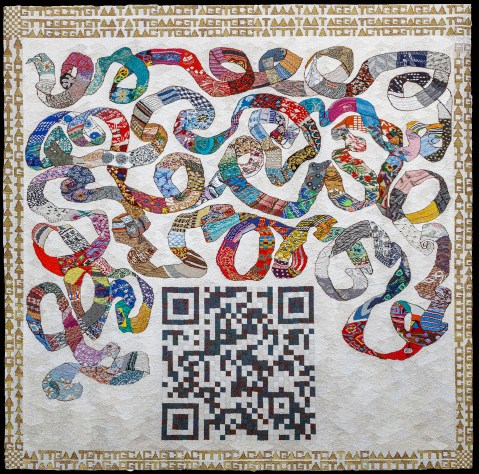Newsletter #217: August, 2025
© Chris Harris. All rights reserved
Welcome everyone!
I just realized, I have made this welcome 217 times, since July 2005; 20 years ago. It is an ongoing privilege.
Contents:
- Cut from the Same Cloth: a story about art, science & humanity.
- An image with meaning.
- A new Exhibition: Churn Creek Grasslands.
- Two images with a story.
- The city called to me; I listened.
Cut from the Same Cloth
The Fabric of our Lives
I’d like to introduce you to a long-time friend, and one of the most creative and talented artists I know; Lorna Donlon.
Lorna, who lives in Dublin, Ireland, was my sister Jane O’Malley’s archivist for decades; I have known her that long. During that time, she has been an art student, has taught art, and most recently, has graduated with a degree in Cell and Molecular Biology. The tapestry, which I share with you below, and which I encourage you to read and appreciate, bridges these two worlds of art and science.
Within this tapestry are human stories of 36 women from minority communities around Ireland who now call Ireland home; stories told in fabric with patterns and colours of biomedical research.
I have this tapestry on my desktop, where I visit it frequently for inspiration and knowledge. When you visit this website, The Fabric of our Lives, you will find there are 4-orange circles within the tapestry; click on them and they will give access to stories within the tapestry. Also, Lorna’s genius was to create a readable QR code within the tapestry; scan it and you will find her project. It is ground-breaking and inspiring.
An Image with Meaning

Artists create; viewers experience and interpret.
When they come together in common spirit, a wonderous exchange happens.
When I made the above image, its creation was based on where, when, and why, I was there; how I felt when I was there, and the subject I was photographing.
Likewise, when viewers look at this image, they interpret it based on where, when, and why they are there; how they feel when they are there, and what subject they are looking at.
No wonder everyone’s taste is unique, and why it’s like a miracle when similar energies unite.
~ ~ ~ ~ ~
I made this image in a shipyard on the west coast of British Columbia. As a mountain person, I normally don’t feel connected within a marine environment; however, this image spoke powerfully to me, and I wanted to exhibit it as a print in my Gallery.
It was printed large and framed; I felt it looked stunning. Over time, however, I had doubts, so I said to my wife, Rita, ‘why are we displaying a semi-abstract marine propeller in an interior grassland gallery in the Cariboo?’ No one will ever understand this photograph.
Indeed, most visitors to the gallery could not even make out what the subject was. I was astonished at their interpretations.
Then, one day, a lady opened the gallery door, entered, and before we could introduce ourselves, she walked straight to the beautifully illuminated print and said, “I have to have this print, I have never seen a propeller expressed so artistically”.
As it turned out, the lady was a Master Mariner who had captained every kind of ship, from liners to freighters, all over the world. She just happened to be passing through the Cariboo!
That moment of intersection and resonance is the moment all artists of every medium wish for. It is the wonderous moment when energies of a common spirit unite.
I will never forget that moment.
A New Exhibition: Churn Creek Grasslands
During the past 35 years I have had the good fortune of exploring, photographing, and published 13 books on the Cariboo Chilcotin region of central British Columbia. As I continue to curate my entire image bank, I post Exhibitions to my website.
Exhibitions are like art gallery exhibits which provide viewers with a sense and spirit of a special place within the Canadian landscape. They are also designed to preserve a moment in time; a historical and educational resource designed to generate a visual identity along with a sense of understanding, appreciation, and value for local residents, fellow Canadians, and global visitors.
A new exhibition has just been published on the Churn Creek Grasslands.
 Churn Creek Grasslands
Churn Creek Grasslands
Viewers are invited to join the adventure of seeing my world as a sacred landscape; as an emotional response; as an artistic philosophy; or as a creative expression.
Enjoy your visit.
Two Images with a Story
Lured by photographs of the Coast Mountains and stories of wild wilderness adventure, I left eastern Canada for British Columbia in 1969. Two months later, I found myself paddling around a 116km Bowron Lakes canoe circuit; a trip that changed my life.
From that experience, after hearing many stories of trappers and guides who all spoke of their Bowron Lake experiences as lifelong highlights, I too became a guide, leading approximately 100 canoe adventures over 30 years. In 1991, I published my first book; a best seller titled The Bowron Lakes: British Columbia’s Wilderness Canoe Circuit. The book contains the following story about a Bowron Lake old-timer, his trapper cabin, and my adventure of photographing it.
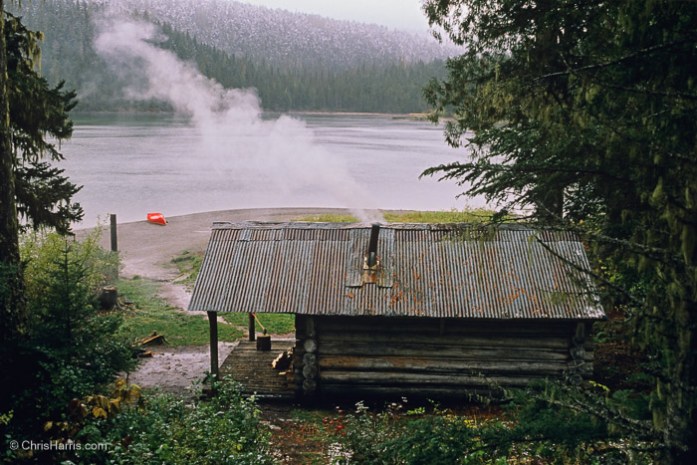 The ‘Old Freddie Becker’ Cabin
The ‘Old Freddie Becker’ Cabin
Old Freddie Becker built this cabin on McLeary Lake in the 1930’s. Here he spent the winter months trapping in the Cariboo Mountains. After reading and hearing stories of his many adventures, I strongly related to Freddie’s lifestyle; I not only wanted to include a photograph of his cabin, but also to capture the feeling of solitude he must have experienced there.
Each year in mid-November, just before the lakes would freeze, Freddie would leave his wife and family in nearby Barkerville to trap in the remote Cariboo Mountains. For the five darkest months of the year, he and his dog Pupper would be alone, together.
To capture this deep sense of solitude, I set off one early November for Freddie’s cabin – at the same time of year as he would have approached it. There was not another person in the park and the snow was creeping down the mountainside.
To capture the essence of Freddie’s home in the wilderness, I placed my red-handled axe on the porch and my red Cedar Chestnut canoe strategically along the shore, lit a fire to make the cabin look lived in, and then climbed a tree to make this image.

I spent an emotional night there, reading by candlelight. I could feel Freddie’s spirit as if he was in the cabin with me. It was a night I will never forget.
These two images are my tribute to the spirit of a man who worked hard, alone, and at great risk to provide a living for himself and his family.
The City Called to Me; I Listened
For over a year now, I have been working on a photographic project completely encased within the natural world; where the elements of visual design are completely different from those that construct the man-made world.
I cannot reimagine natural realities as I do man-made realities. The elements of line, angle, shape, and texture, are antithetic in both landscapes. Each evoke different feelings, and each require different techniques of photographic expression.
Last month I had a strong urge to jump away from my nature project and go to the city. I felt I needed to work in an environment where I had to visualize differently, experiment differently, and use my camera differently. It was as if I needed to speak a different language; to express myself new ways.
I listened! I called up two friends and coordinated an outing to photograph in downtown Vancouver. I wanted to connect with human emotions.


In the natural world, lines, shapes, and textures have been evolving for billions of years. To express them effectively required fresh perspectives and using one’s camera in unique ways. In the above two images, my aim was to go beyond reality by emphasizing the elements themselves.
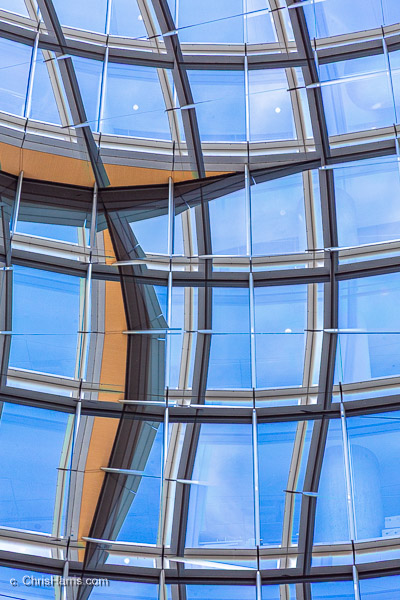
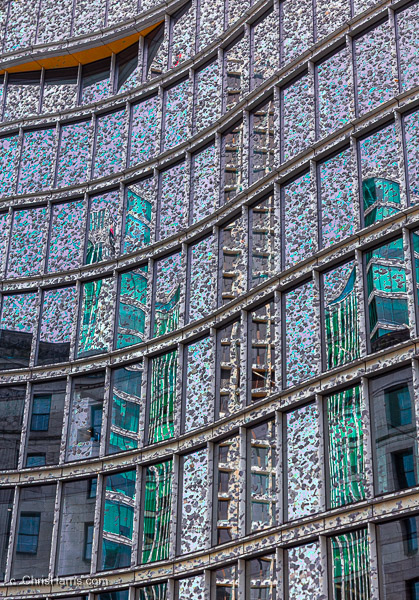
Human architects use lines, angles, shapes, and textures in different ways which in turn evoke different responses. My interpretations of this skyscraper, for example, represent the intersection between reality and imagination. Expressions of man-made and natural landscapes often require different capture techniques.


Eventually I got to where I wanted to be, as skyscrapers were not doing it for me. The alleyways of the inner city, however, were overflowing with the human condition; packed with emotional content. I suddenly felt creative. I had the urge to experiment and to explore what I felt was possible.


The alleyways were evocative. Considerable thought was required to both understand and express those feelings.

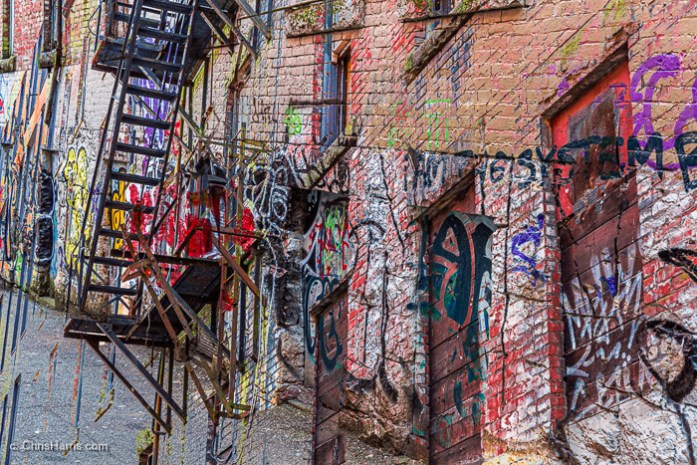
The above two images were envisioned around the powerfully shaped and recognizable black escape ladder. The remaining compositional elements were added while walking up and down the alley. To envision the final composition, I choose and placed graffiti lines, subject matter, and colours; much like a painter would do.
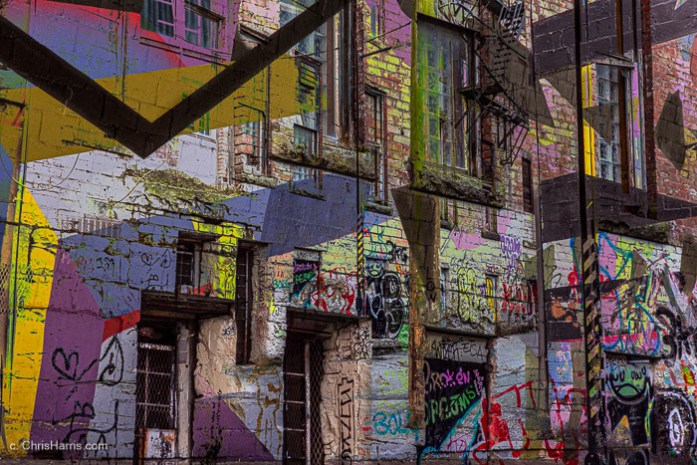
I began this composition with the very distinct high contrast V in the upper left. Additional exposures of subjects within the alley constituted the rest of the composition.

The thrill of this style of photography is creatively generating my own composition rather than merely replicating the alley viewscape.
To make this image, I captured what I felt was the true essence of the alleyway. Carefully imagined and placed, the beige entrance in the foreground is to draw the viewer down the alley and into the world of mural art.
Concluding thought:
Since photographing a man-made environment with crowds of people and intense human energy, I have returned to working alone on my natural world project feeling refreshed and energized.
I love to discover new ways to express myself with my camera. In the natural world I feel content; the path I am on is taking me to the place where I want to go.
All of us at Chris Harris Photography thank you for your subscriber support!
Check out my Portfolio’s
View Exhibitions
Subscribe to this Newsletter


